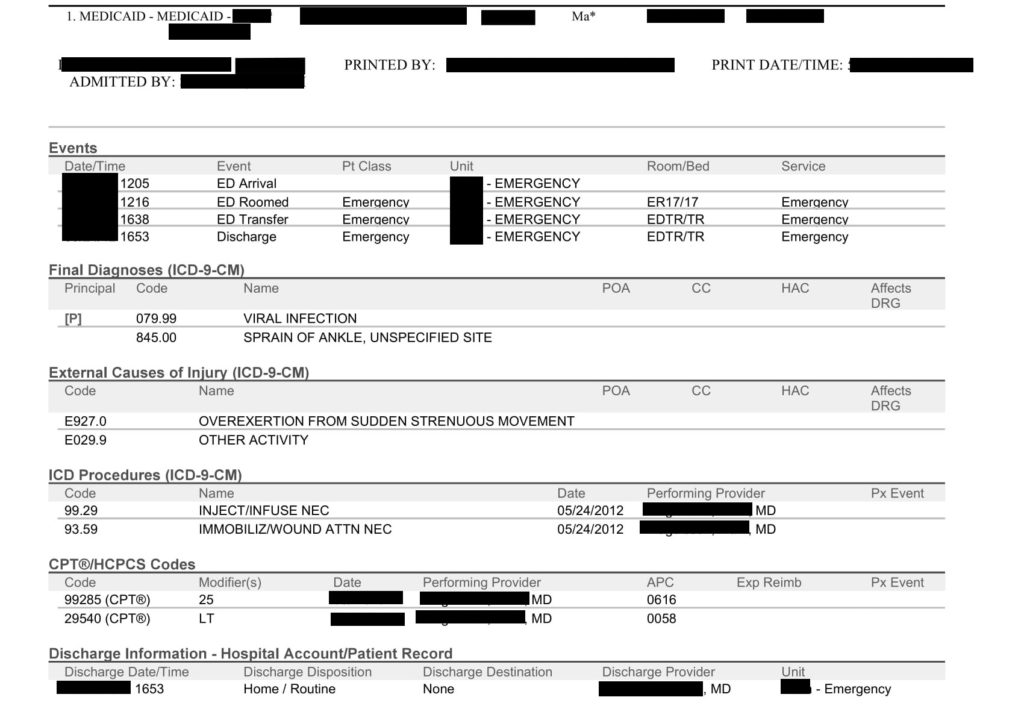Index Case 7
Ankle Injury
Testing and Treatment
Disposition
Billing
Return ED Visit
Outcome
Plaintiff Claims
Defense Response
Legal Outcome
Case Review
Documentation Review
Dr. Jason Adler (@ercoderguy), an Emergency Medicine physician and expert on EM coding and billing, has kindly offered to provide a review of this information. The billing information for this visit is shown here, and Dr. Adler’s explanation is below.

This certainly meets documentation guidelines for a level 5 (99285) visit. There is a comprehensive history and exam, which includes 4 elements of the HPI, 10 ROS, an 8 system exam, and 2 of the past/family/social history. The medical decision section is also of high complexity, involving blood work, urinalysis, oral and IV medications, and a liter of saline.
Of particular note, especially in today’s climate, the diagnostic sequencing would likely be a little different. Instead of viral syndrome, a better diagnosis tree would be headache, nausea and vomiting, screening for malaria, and strain of ankle. The reason “overexertion from sudden strenuous movement” is there, is because some insurers require a mechanism of injury relative to the diagnosis, in this case, an ankle sprain.
For cases involving a high complexity MDM, we are able to look at the studies ordered and interventions done to determine risk and diagnostic options. It is usually recommended to include a differential diagnoses list to make the risk and complexity more clear. The medical decision-making demonstrates the cognitive intensity and decision making that was used through the encounter.
A few points that stand out to me: there is room for improvement in the ankle exam, neuro exam, and constitutional exam. These systems are directly related to the chief complaint. For the ankle, I would like to have skin, compartments, joint above/below, and pulses. This part of the note appears templated, with no patient-specific information.
Moving forward, especially about 2 years from now, demonstrating the cognitive intensity will be more important than element counting. This is all in the space between the exam and diagnosis.